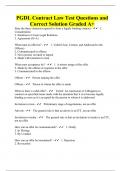College aantekeningen
Migration & Society: all lectures notes + preparatory literature!
- Instelling
- Radboud Universiteit Nijmegen (RU)
This document provides an interview of the learning material of the course Migration & Society at Radboud University. It includes both the lectures notes and short summaries of the individual articles which must be read for some lectures. Some schemes are included to make the learning material mo...
[Meer zien]













